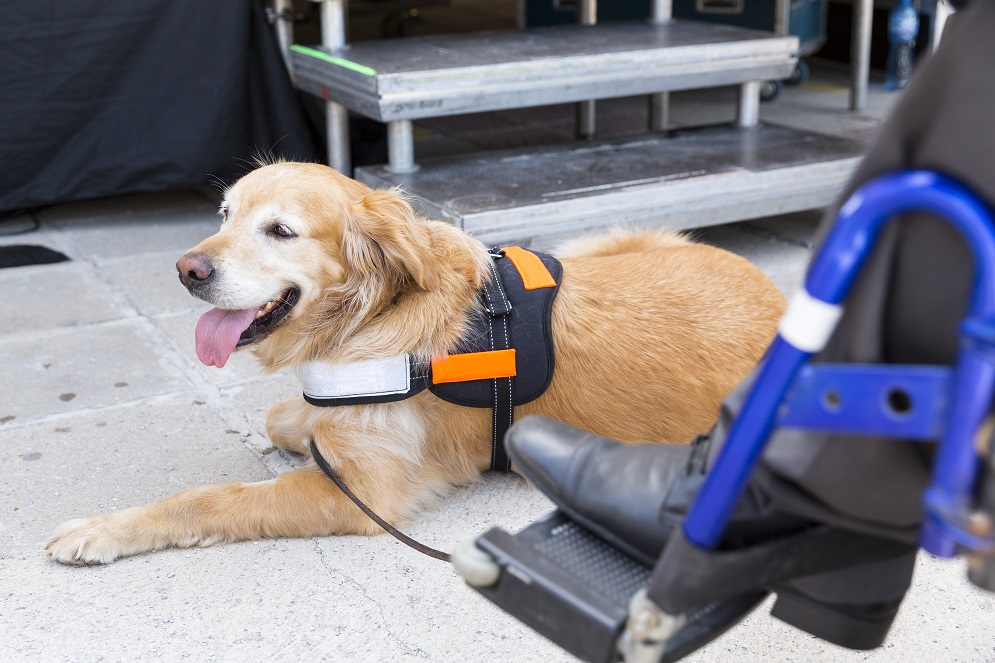If you’re a frequent traveler, you have, undoubtedly, noticed a marked increase in the number of passengers traveling with emotional support animals. In most cases, this support is provided by a dog but, in recent years, passengers have realized the therapeutic benefits of traveling with birds, reptiles and in one case, a diapered ferret. If you’re like many travelers, you might just be rolling your eyes at this new phenomenon and wondering why it might seem that the rights of these few passengers trump the rights of the majority who have all but had it with the Noah’s Ark approach to air travel. It’s time to take a closer look at this trend and get down to the facts.
What does the ADA have to Say?
To drill down on this topic, it is necessary to refer to the Americans with Disabilities Act which was revised in 2011 to specifically define a service animal. According to the ADA, “a service animal means any dog that is individually trained to do work or perform tasks for the benefit of an individual with a disability, including a physical, sensory, psychiatric, intellectual, or other mental disability”. Does this include Emotional Support? According to the ADA, the short answer is “No” The acts that the dog is trained to perform are required to be specific and, again, according to the ADA “…can include, among other things, pulling a wheelchair, retrieving dropped items, alerting a person to a sound, reminding a person to take medication, or pressing an elevator button.” Additionally, the ADA states–very specifically–that a service animal is a dog. The Act also makes allowances, with certain limitations, for miniature horses to perform these tasks as well, but as of the writing of this article, iguanas, ferrets, cats and parrots have yet to make the list. You can access the ADA service animal fact sheet here: https://adata.org/factsheet/service-animals
What about the Air Carrier Access Act?
When pressed for an answer as to why these animals are allowed on flights, air carrier representatives have repeatedly made the claim that they are simply complying with the Air Carrier Access Act, which prohibits discrimination on the basis of disability in air travel. In reality, the ACAA makes no mention of emotional support animals, but rather, speaks to the airlines themselves providing accommodations to passengers with disabilities. The fact of the matter is that the Act is mute on the topic of service animals, other than to loosely imply that denying a passenger a service animal on a flight could be a violation of its mandates. That would logically force one to refer back to the ADA for a definition of a service animal, and then you’re back at square one.
But I Have a Note from My Doctor
It has been widely rumored that a note from your physician or counselor can compel the world at large to regard your pampered pooch (or other species of pet) as a service animal. This is simply not true. Your doctor is most likely brilliant but (with very few exceptions, of course) most likely not in a position to qualify your dog a service animal. The truth is that most doctors know nothing about their patients’ dogs other than that their patients “feel better” when their pets are around. In a certain sense, that could qualify all dogs as service animals. In reality, even if you have a note from your doctor and a snazzy orange vest for your dog, you still do not have a service animal, as defined by the ADA.
So, What’s This All About, Then?
There’s an adage that states that if you want to find out the reason for something, simply follow the money. This may hold true in this case as well. Traditionally, to travel with a pet, one had to pay approximately $150 and have the animal kenneled and held in the cargo area of the plane for the duration of the flight. On the other hand, a service animal is allowed in the cabin, does not have to be in a kennel, and travels with its owner for no additional charge. So, by having a service animal, one can avoid additional travel expenses. What’s more is that even if you are traveling with an animal that is small enough to fit in a kennel that meets “carry on” requirements, your service animal will not be considered a carry-on. This allows you to bring your pet and an additional carry-on bag.
Could this be enough motivation to compel people to feign an ambiguous disability? Hopefully not. There are many service animals that provide an invaluable service to their handlers who without them, would not lead the active lives that they do. One can only hope that others are not exploiting the rules that make travel possible for millions of people with disabilities.
By: Denise D.

Cassie Sclafani





